Cheese (aka Dinafem Cheese)
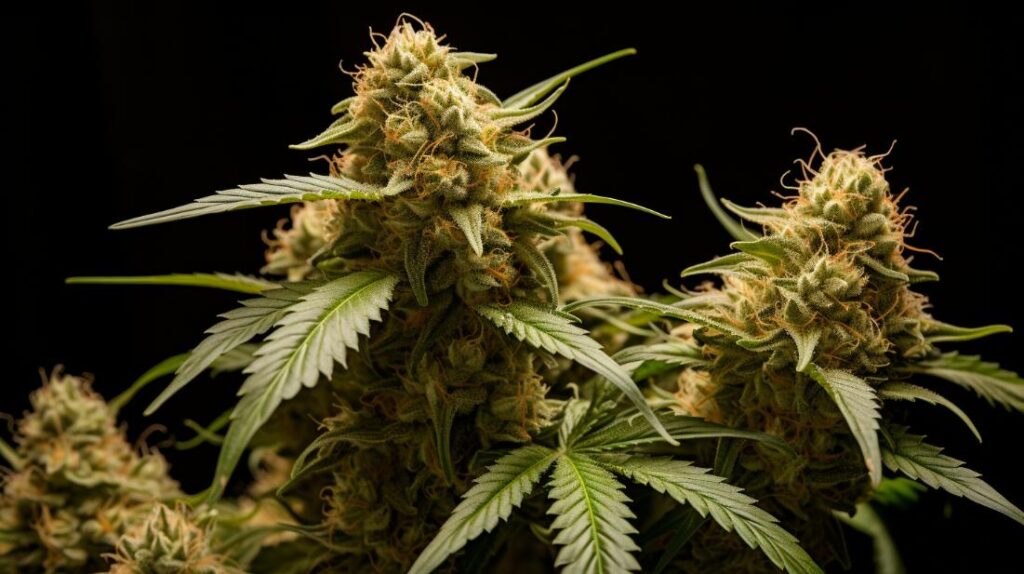
The Cheese strain, a notable indica-dominant hybrid, has garnered attention within the cannabis community for its unique aromatic profile and its potent effects. Originating from the United Kingdom, its lineage can be traced back to a Skunk #1 phenotype, which imparts a distinctive sour tang reminiscent of aged dairy.
While its robust terpene blend contributes to the strain’s sharp olfactory signature, the Cheese strain also boasts a higher-than-average THC content, which may provide a powerful, calming experience. However, alongside its therapeutic potential in managing stress, pain, and anxiety, it is important to consider the dichotomy presented by its associated side effects, which can range from mild discomfort to more severe reactions.
Given its ease of cultivation, Cheese has become a strain of choice for a wide range of growers. As we examine the complexities of this strain, one must ponder the implications of its widespread popularity and the nuances that contribute to its controversial reputation among connoisseurs and medical users alike.
Genetic Lineage
The genetic lineage of the Cheese strain is a testament to the meticulous craft of cannabis breeding, originating from a distinctive Skunk #1 phenotype and enriched with Afghani indica genetics to optimize its trichome production and yield.
This indica-dominant hybrid, renowned for its pungent, sour scent, encapsulates the essence of its ancestral roots in the United Kingdom’s diverse cannabis culture.
The phenotype of Skunk #1 at the heart of Cheese’s ancestry is celebrated for its robust terpene profile and enduring popularity, which provided a solid foundation for the strain’s subsequent evolution.
Breeders, recognizing the intrinsic value of the Skunk #1 phenotype, sought to enhance its desirable attributes through strategic hybridization.
By integrating Afghani indica, a varietal known for its ample resin production and stout stature, they aimed to amplify Cheese’s trichome density and overall yield potential.
This deliberate genetic refinement underscored the breeders’ commitment to elevating the strain’s performance and sensory appeal.
Analyzing the genetic lineage of the Cheese strain reveals a purposeful melding of two cannabis archetypes: the vivacious and aromatic Skunk lineage with the resinous, high-yielding traits characteristic of Afghani indica varietals.
Such judicious genetic manipulation has produced a strain with a complex profile and a legacy that is both cherished and meticulously preserved by connoisseurs and cultivators alike.
THC/CBD Content
With THC levels typically ranging from 15% to 20% and averaging around 17%, Cheese strain stands out for its robust psychoactive potency. This considerable THC concentration is responsible for the strain’s intense and long-lasting effects, which are sought after by both recreational users and medical marijuana patients alike. The higher THC content also contributes to the Cheese strain’s ability to produce high yields, which is advantageous for cultivators looking to get the most out of their harvest.
The CBD content in Cheese, on the other hand, is relatively low, often falling below 1%. This imbalance between THC and CBD makes Cheese a strain that may not be the first choice for those seeking the non-psychoactive benefits of CBD. However, the strain’s CBN level, which is approximately 1%, can contribute to the sedative effects experienced by some users.
- Psychoactive Effects: The high THC levels induce a powerful body-numbing sensation, making it popular for relaxation and stress relief.
- Aroma and Flavor: Cheese’s potency is mirrored in its pungent, skunky aroma – a telltale sign of its strength.
- Medical Use: Patients may utilize Cheese for its potential in alleviating chronic pain, insomnia, and appetite loss.
- Cultivation Benefits: High THC content may correlate with high yields, which is beneficial for growers seeking profitable crops.
Terpene Profile
Moving beyond the cannabinoid composition, the distinct sharp and sour aroma of the Cheese strain can be attributed to a rich terpene profile, which includes myrcene, caryophyllene, and limonene as its dominant components.
These terpenes are responsible not just for the strain’s characteristic sour aroma, but also for its nuanced flavor profile, which presents an earthy and spicy bouquet with hints of citrus.
Myrcene, the most prevalent terpene, is known for its musky, earthy tones that can induce a sedative, relaxing effect on the user. This may contribute to the Cheese strain’s reputation for its calming properties.
Caryophyllene, with its spicy and peppery notes, is another terpene that plays a significant role in the Cheese strain’s aroma. Beyond its contribution to the strain’s scent profile, caryophyllene is recognized for its potential anti-anxiety and pain-relieving properties.
Limonene adds a refreshing citrusy undertone to the mix, known to aid in mood elevation and stress relief, rounding out the Cheese strain’s compelling terpene profile.
The interplay of these terpenes not only enhances the sensory experience but also contributes to the entourage effect, potentially amplifying the therapeutic benefits of the Cheese strain.
This synergy is particularly appreciated in aromatherapy practices, where the Cheese strain’s unique aromatic signature is sought after for its calming and soothing effects.
Effects
Harnessing a higher-than-average THC content, the Cheese strain delivers a potent and immediate onset of effects, characterized by an uplifting sense of happiness and a deep sense of relaxation. As a marijuana strain celebrated for its distinctive influence on both mind and body, Cheese is particularly favored by those looking to decompress from stress or engage in leisure activities with a heightened sense of enjoyment.
Analyzing its effects in greater detail:
- Euphoria and Creativity: Contrary to inducing lethargy, Cheese can spark a creative euphoria, making it a preferred choice for artistic pursuits or social gatherings.
- Appetite Stimulation: The strain is known to increase appetite significantly, offering therapeutic benefits to individuals dealing with appetite loss or nausea.
- Versatility in Effects: While it relaxes, Cheese does not necessarily confine users to inactivity; its impact can vary depending on the consumer, with some experiencing an energetic burst.
- Common Side Effects: As with many marijuana strains, Cheese may cause dry mouth and eyes. Users should also be cognizant of the potential for heightened paranoia, especially in those predisposed to anxiety.
Medical Uses
The Cheese strain has been recognized for its therapeutic potential, particularly in managing chronic pain, stress disorders, and insomnia due to its sedative properties and analgesic effects. The genetics of the Cheese strain contribute to its robust trichome production, which is not only an indicator of potency but also of the concentration of therapeutic cannabinoids and terpenes. High trichome density correlates with elevated levels of cannabidiol (CBD) and tetrahydrocannabinol (THC), the primary compounds responsible for its medical efficacy.
Analytically, the Cheese strain’s profile exhibits a rich array of cannabinoids that work in synergy, known as the entourage effect, to enhance medicinal benefits. The strain’s high THC content is crucial in the modulation of pain signals and can provide significant relief for patients suffering from chronic pain conditions. Its CBD content, though less than THC, contributes to the anti-inflammatory and anxiolytic properties, making it a suitable adjunct for stress-related disorders.
Descriptively, patients report a sense of relaxation and well-being upon administration, which underscores its utility in combating insomnia. The sedative effects are attributed to the strain’s terpene profile, particularly myrcene, which is known for its soporific qualities. This makes the Cheese strain a viable option for those seeking a natural alternative to pharmaceutical sleep aids.
Flavor and Aroma
Building upon the Cheese strain’s medical applications, its distinct flavor and aroma profile is just as noteworthy, characterized by a sharp, sour scent that is unmistakably reminiscent of traditional cheeses. The experience of consuming Cheese strain is like taking a sensory journey through a rustic French cottage, where the air is laden with the fragrance of artisanal cheese making.
The flavor and aroma of Cheese strain are intense and can be quite polarizing, with users either loving or being put off by its strong presence. However, for enthusiasts who appreciate its profile, Cheese offers a complex and satisfying experience. Easy to grow, this strain has gained popularity among cultivators for its unique characteristics and robust genetics. Here’s a deeper dive into the flavor and aroma nuances of Cheese strain:
- Pungent cheese aroma: Evokes the sharpness of cheddar and the funk of blue cheese.
- Complex flavor profile: Combines blue cheese tanginess with an underlying skunk note.
- Earthy undertones: Adds depth to the taste and enriches the overall sensory experience.
- Body-numbing high: Accompanies the distinctive taste, enhancing the strain’s appeal.
Analyzing the Cheese strain’s flavor and aroma reveals a deliberate balance between its bold qualities and the enjoyable effects it provides to users.
Appearance
Emerald hues and fiery orange pistils define the Cheese strain’s appearance, making it a visually striking variety that mirrors its intense olfactory and gustatory signatures. Cultivated by Big Buddha Seeds, Cheese’s vibrant emerald-colored buds are adorned with bright green nugs that are interwoven with thin, wispy orange pistils. These features contribute to its unique and recognizable visual identity that hints at the robust flavors locked within.
Analytically, the Cheese strain’s appearance is not just aesthetically pleasing but also indicative of its hearty genetics. The plant’s resilience in growth, evidenced by its resistance to mold, mildew, and pests, is paralleled by the robust visual characteristics of its thick, dense buds. As it matures, the strain exhibits a high yield, growing tall and commanding attention with its foliage that flourishes during a flowering period of 56 to 70 days.
The Cheese strain presents a formidable visual impression that aligns with its impactful effects. The pronounced body-numbing high is foreshadowed by the substantial appearance of its buds, which seem to promise a potent experience. This is a testament to the careful breeding and cultivation practices employed by Big Buddha Seeds, which have resulted in a strain whose appearance is as distinguished as its effects.
Grow Information
Reflecting on the Cheese strain’s robust physical characteristics, it is important to note that this translates into an equally resilient behavior during cultivation, allowing growers of various skill levels to achieve successful harvests. Its ability to thrive in different growing mediums, like hydroponics, and its adaptability to both indoor and outdoor environments make it a versatile choice for cultivators.
When planning a grow operation with Cheese, considering the following points is crucial:
- Supporting Structures: Implementing stakes or netting to support the branches as they bear the increasing weight of the dense flowers.
- Odor Management: Utilizing a carbon filter is essential to mitigate the pungent, skunk-like aroma that can be a concern, especially in areas where cannabis cultivation must be discreet.
- Topping for Yield: Engaging in multiple topping practices can significantly increase the yield by producing bushier plants with more flowering sites.
- Flowering Stretch: Anticipating approximately 2X height increase upon switching to a 12/12 light cycle is key to avoid space issues and optimize grow room setup.
Growers seeking to cultivate the Cheese strain can find PRODUCTS NEAR their location that cater to these specific requirements, ensuring that they are equipped to handle its unique growth patterns and maintenance needs.
Adverse Effects
The Cheese strain, while popular for its unique flavor profile and potent effects, may also lead to several adverse reactions such as dry mouth, dry eyes, and in some cases, heightened anxiety or paranoia, particularly in individuals sensitive to high THC levels. Users should be aware of the potential for throbbing headaches, head spins, and anxiety attacks, especially during initial use. These adverse effects are a direct consequence of the strain’s high THC content, which typically ranges between 15% and 20%.
While these negative effects may be common at the onset, they are not deemed particularly harmful in the long term. However, the incidence of dry eyes and dry mouth is a frequent complaint among consumers, pointing to the strain’s potency and cannabinoid profile that can affect salivary glands and ocular tissues.
Advisably, those who choose to consume the Cheese strain should exercise caution, particularly novices or individuals with a predisposition to anxiety or paranoia. Moderation is key, and users may benefit from staying hydrated and using the strain in a comfortable, familiar environment to mitigate potential adverse effects. Knowledgeable use and an understanding of one’s own sensitivity to THC can help in preventing or lessening the intensity of these reactions.
Comparisons with Similar Strains
Understanding the potential side effects of the Cheese strain is crucial; similarly, comparing it to other strains can highlight its unique characteristics and suitability for various users. Originating from the United Kingdom, the Cheese strain’s pungent, skunk-like aroma places it in the same sensory category as other skunk strains, yet its distinct scent carries a certain depth that sets it apart.
With a THC content ranging from 15-20%, Cheese offers a potency that may appeal to seasoned consumers who appreciate the robust experience provided by high-THC strains such as Skunk #1. Furthermore, Cheese’s calming effects, capable of inducing a sense of happiness, bear resemblance to the soothing nature of other indica-dominant strains, which are frequently sought after for their relaxation and euphoric qualities.
- Aroma Profile: Cheese’s strong skunk-like smell is akin to that of other skunk strains, yet it’s uniquely nuanced with a fruity berry scent.
- Potency Comparison: At 15-20% THC, Cheese is comparable to the high-THC levels found in strains like Skunk #1.
- Effects and Benefits: Similar to other indica-dominant strains, Cheese is known for its relaxation and euphoric effects, along with potential therapeutic benefits such as stress relief and pain management.
- Cultivation Attributes: Cheese’s beginner-friendly growing traits and resilience mirror those of low-maintenance strains, making it a solid choice for novice cultivators.
In an analytical context, Cheese is a strain that not only stands out due to its distinct characteristics but also integrates the desirable qualities of similar strains, presenting a comprehensive option for a broad range of cannabis enthusiasts.
Research and Studies
How has scientific inquiry shed light on the unique properties and cultivation aspects of the Cheese strain? Research and studies have meticulously examined the Cheese strain, starting from its origins in the United Kingdom as a standout phenotype of Skunk #1. This inquiry has not only confirmed its distinctive aroma and flavor but has also documented its indica-dominance and notable THC content, which ranges between 15% and 20%. This makes it a powerful strain for inducing calm and alleviating pain.
The strain’s cultivation characteristics have been found to be particularly beginner-friendly, with a relatively short flowering time indoors and a moderate yield. The THC concentration, stabilizing around 18-20%, further emphasizes its potency and appeal.
The table below encapsulates the emotional journey and therapeutic potential that research attributes to the Cheese strain:
|
Effect |
Description |
|
Happiness |
Studies link the strain with elevated moods and euphoria. |
|
Relaxation |
Research highlights its body-numbing high and calming properties. |
|
Appetite |
Increased appetite is a frequently reported effect, aiding those with eating disorders. |
In essence, the Cheese strain’s research profile paints a picture of a versatile, potent cannabis variety with a unique sensory profile and significant therapeutic benefits.
History and Origin
Building on the insights from research, the Cheese strain’s history and origins are deeply rooted in the U.K.’s cannabis culture, emerging as a distinct phenotype of Skunk #1 with a robust cheddar-like profile. This indica-dominant hybrid, also known as Dinafem Cheese, stands out for its sharply sour aroma and has gained notoriety for its unique sensory characteristics.
The history and origin of Cheese trace back to the late 1980s, where it first appeared as a rare female phenotype of Skunk #1, captivating the attention of breeders and cannabis enthusiasts alike.
- Distinctive Genetics: Emergence between 1988 and 1989 as a unique Skunk #1 phenotype.
- Afghani Influence: Introduction of Afghani indica genetics to enhance trichome production and yield.
- Sensory Profile: Notable for its strong cheddar-like flavor and sharp, slightly sour, earthy aroma.
- Grower-Friendly: Forgiving to beginners, suitable for hydroponics, with a flowering time of approximately 8 weeks indoors.
The Cheese strain’s history and origin story underline its evolution within the U.K. cannabis scene, with its potent effects that induce calming, happiness, and euphoria, alongside a conspicuous appearance marked by bright green nugs. This strain’s development highlights the innovative approaches of breeders in enhancing strain attributes, resulting in a celebrated legacy within the cannabis community.
Frequently Asked Questions
What Strain Is Cheese?
The strain in question is characterized by a unique flavor profile, combining a sharp, sour aroma with fruity, berry notes and distinctive cheese-like undertones, indicative of its Skunk #1 and Afghani indica lineage.
Is La Cheese a Sativa or Indica?
La Cheese is classified as an indica-dominant hybrid, with genetic origins tracing back to a Skunk #1 phenotype and enhanced by Afghani indica, contributing to its calming effects and substantial trichome production.
Is OG Cheese a Sativa or Indica?
OG Cheese, when categorized by strain classification, falls predominantly under the indica-dominant hybrid category, characterized by its tranquilizing effects, substantial THC content, and suitability for pain and stress alleviation.
Is Super Cheese Indica or Sativa?
Super Cheese is predominantly an indica-dominant hybrid, with strain origins rooted in the U.K. Its genetic makeup provides users with relaxing effects, distinguishing it from sativa-dominant varieties in both effect and cultivation characteristics.

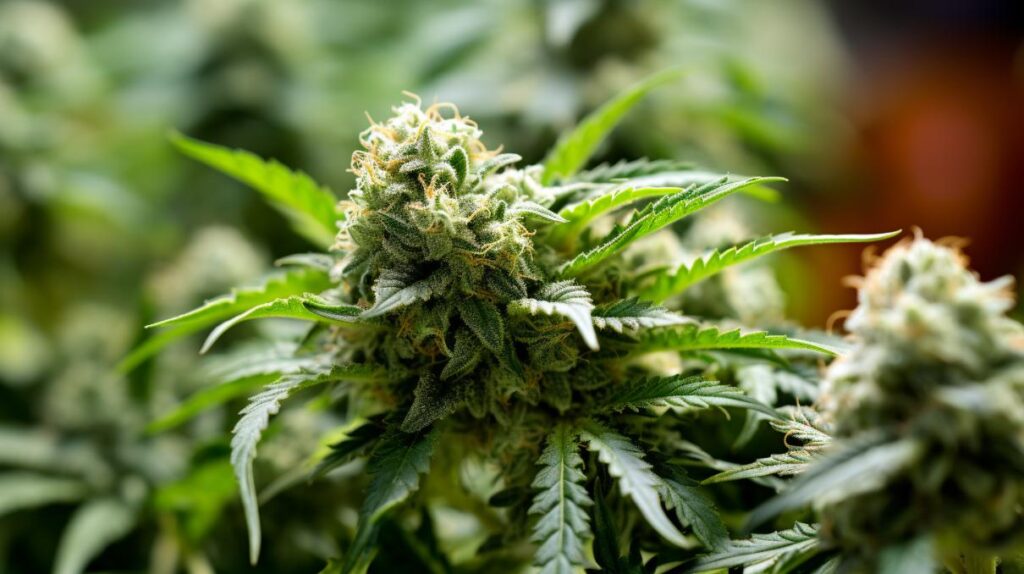
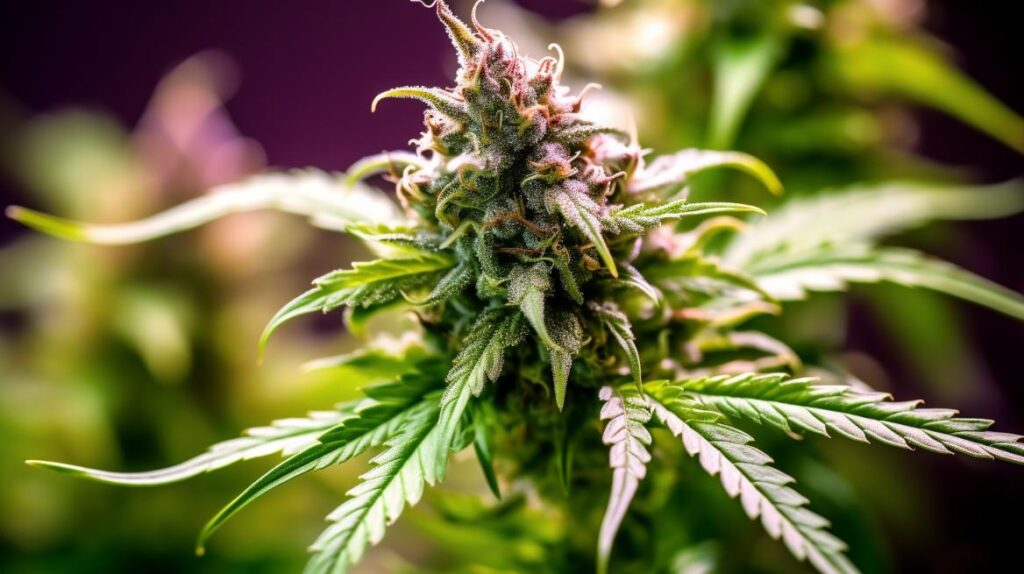
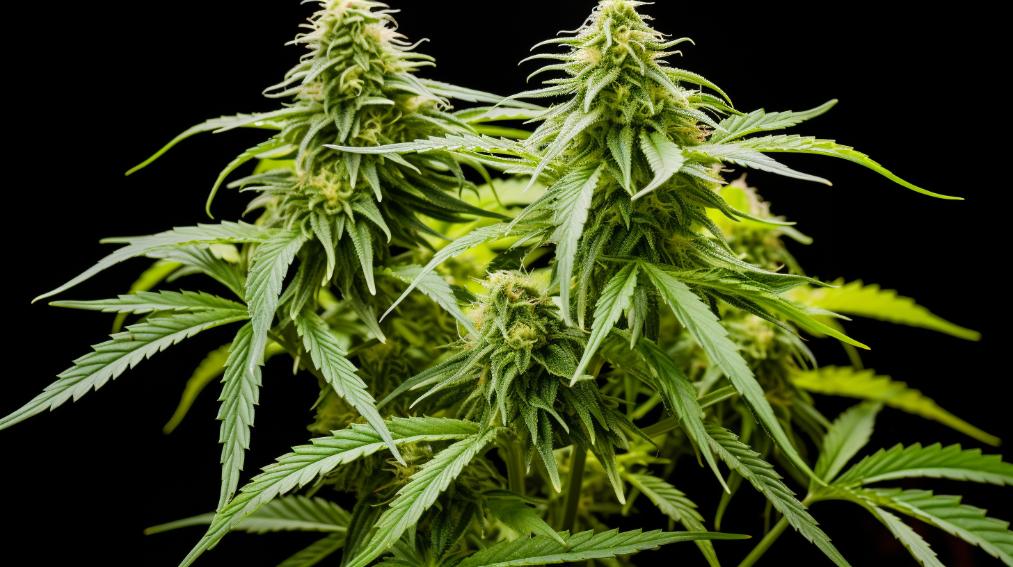
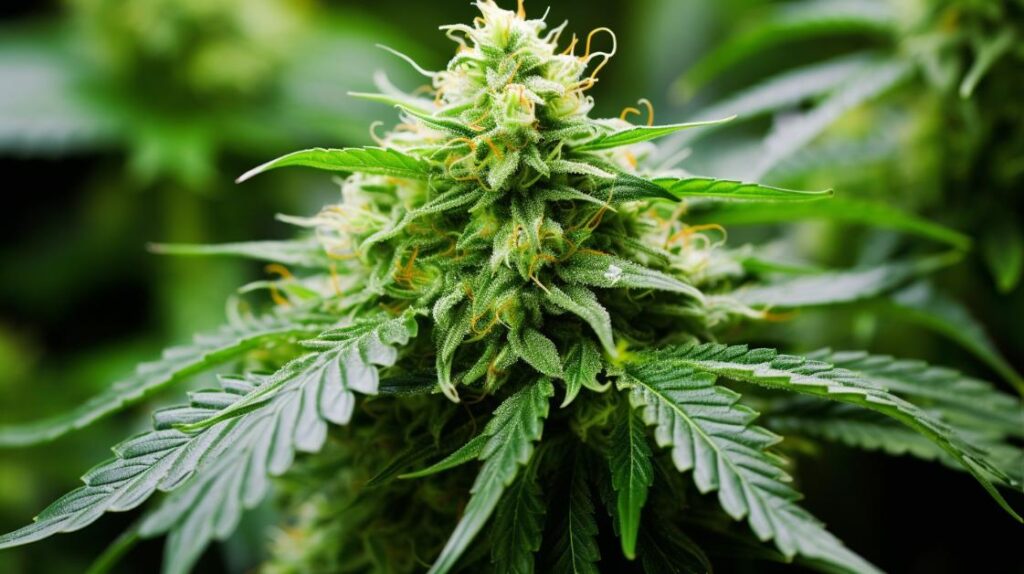
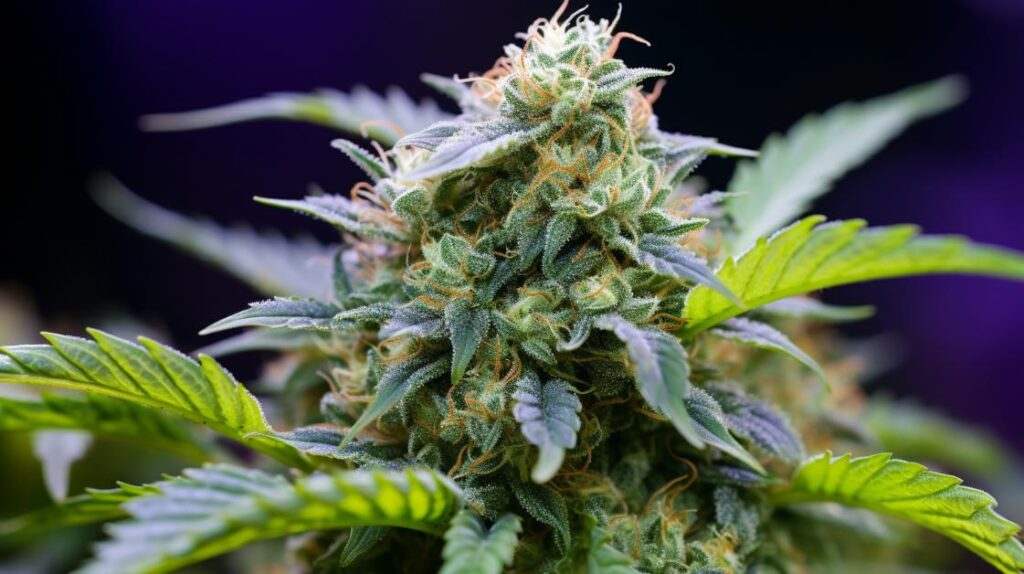

Responses